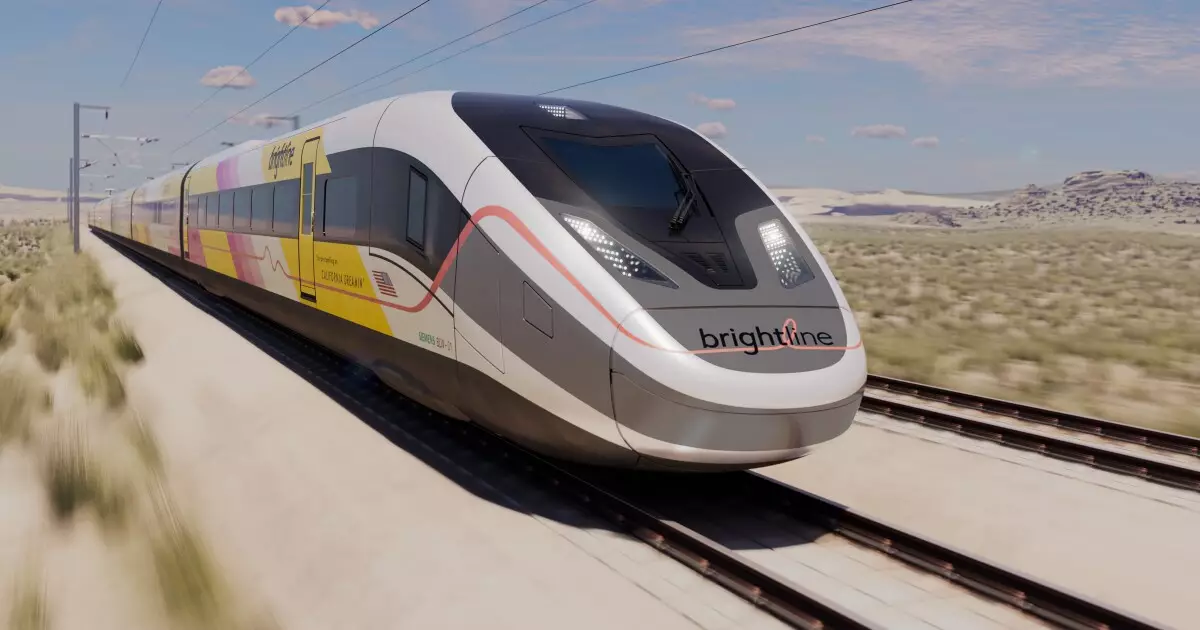The introduction of Brightline West’s Las Vegas-Los Angeles bullet train project marks a significant milestone in the U.S. transportation landscape, particularly in the context of public-private partnerships. With the recent launch of a $2.5 billion private activity bond offering that captures interest with nearly double-digit yields, Brightline West’s financial maneuvering stands as a testament to the growing potential of high-yield municipal bonds. As the first of several financing phases for a project estimated to cost $12.4 billion, this deal lays the groundwork for what could become a transformative transportation option for millions.
At the core of Brightline West’s financing is a distinctive approach to bond structuring, evidenced by the issuance of a single $2 billion CUSIP. This tactic, though relatively uncommon in the municipal bond market, is touted by investors as a strategy designed to enhance liquidity. Jim Lyman of Belle Haven Investments characterized this bond issuance as “eye-popping,” not only due to its attractive yields but also the structural advantages it offers. Investors often seek bonds that provide a robust return with the assurance of adequate market liquidity, and Brightline West’s offering appears to fulfill these criteria effectively. The overwhelming demand—over $3.4 billion in orders from 75 accounts—underscores the appeal and perceived quality of the investment, presenting an inflection point for similar projects across the nation.
The bonds issued by Brightline West showcased a 9.5% coupon priced at a discount, raising questions about the financial underpinning of such a high yield. In a market often characterized by conservative returns, a bond that affords investors not only high coupon rates but also a secured lien on a promising transportation venture carries significant allure. One portfolio manager noted that these bonds present a mix of advantages, from liquidity to government backing, all while maintaining relatively low duration risk. Such features often compel investors to view the offerings as too enticing to pass up, further bolstered by the project’s promising economic premise.
Despite the enthusiasm surrounding the financing, challenges loom on the horizon. The disclosed timeline anticipates construction completion by December 2028—yet this date has already slipped past initial projections aimed at coinciding with the Los Angeles Olympics. Meeting this revised target is now pivotal not just for stakeholders but also for public sentiment regarding the efficacy of high-speed rail initiatives. Additionally, Brightline West is tasked with securing a $6 billion bank facility within 180 days, a venture that will be paramount for the project’s sustainability and completion. The potential for mandatory bond redemption should these financial conditions remain unmet creates a precarious situation, underscoring the high stakes involved.
Highlighting the profound influence of political contexts on infrastructural projects, Brightline West garnered attention when the Trump administration praised its endeavors amidst speculation about rescinding federal grants aimed at California’s high-speed rail initiative. This juxtaposition illustrates the volatility of federal support for high-speed rail and the varying degrees of political endorsement. Brightline West not only received a $3 billion federal grant, but also managed to sidestep some of the uncertainties fueling investor anxiety regarding funding continuity. The project’s future may now depend upon maintaining favorable political relationships and ensuring that funding commitments are honored amidst changing administrations.
The burgeoning interest from investors reflects the broader potential market for high-speed rail financing, particularly in an environment where traditional public sector funding struggles to keep pace with infrastructure demands. Still, the caution expressed by firms like GW&K Investment Management emphasizes the need for careful consideration of ridership projections and the foundational economics of such projects. As construction is slated to begin shortly, the next steps will be critical; stakeholders must navigate the complexities of securing additional capital while ensuring that operational plans remain on track.
Brightline West’s audacious venture into the world of high-speed rail financing represents not only an ambition to reshape intercity connectivity but also a case study in navigating intricate financial landscapes. The project showcases the potential of private sector engagement in public transportation, though it is accompanied by unique challenges that require robust strategic planning and broad stakeholder collaboration. As America eyes the possibilities of high-speed rail, the success or failure of Brightline West may serve as a bellwether for future projects across the country.

